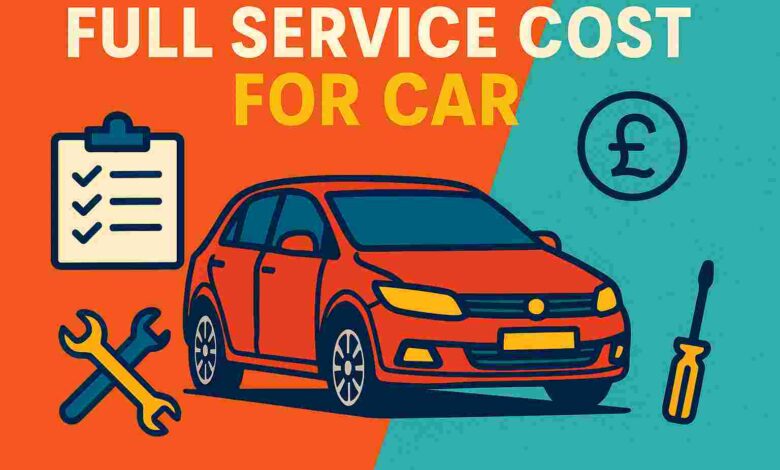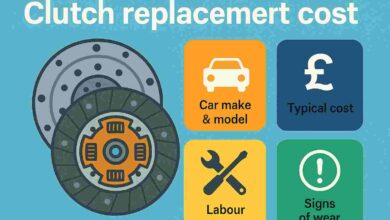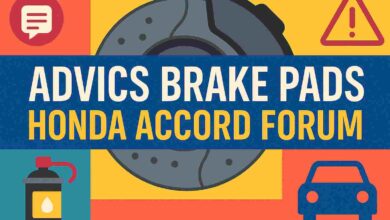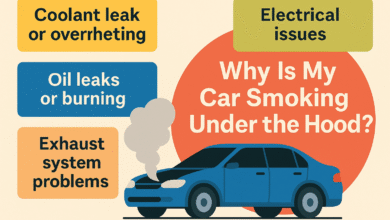Full Service Cost For Car: Ultimate Guide to Saving Money and Avoiding Hidden Charges
Understand the real price of car servicing in the UK and make smart decisions to protect your vehicle and your wallet.

Table of Contents
ToggleIntroduction
A full service cost for car is one of the most crucial investments you will make as a car owner. Regular servicing not only keeps your vehicle running smoothly but also ensures safety on the road. In the UK, where driving conditions vary greatly, understanding car service cost UK is essential for planning and avoiding unnecessary expenses.
This article provides detailed insights into the full car service price UK, factors influencing costs, and tips to save money while maintaining vehicle performance. By the end, you’ll know how much does a full service cost and how to choose the right garage without compromising quality.
What is a Full Car Service
A full car service is a comprehensive check-up performed annually or every 12,000 miles, whichever comes first. Unlike interim services, which cover basic maintenance, a full service involves an in-depth inspection and replacement of essential components.
Tasks typically include oil and filter changes, brake checks, tyre rotation, fluid top-ups, and battery inspection. Understanding what is included in a full service UK helps you compare packages and ensure you receive value for money.
Why Regular Servicing Matters
Regular servicing protects your car from wear and tear while improving performance and fuel efficiency. Vehicles that miss scheduled maintenance are at higher risk of breakdowns and expensive repairs.
Spending on vehicle maintenance cost UK may seem like an extra expense, but it saves money in the long run by preventing engine damage and extending the car’s lifespan. A well-maintained car also has a higher resale value.
Average Full Service Cost UK
The average full service cost UK varies depending on several factors, including car size and location. For smaller hatchbacks, the cost may range between £150 and £200, while SUVs or luxury vehicles can go up to £350 or more.
When comparing prices, consider whether you’re booking a full service inclusive of MOT cost UK or a standalone service. Bundled packages often provide better value for money.
Factors That Affect Full Service Costs
Several elements determine the full service cost estimates by car size UK, and understanding them helps you budget wisely.
Car Size and Type
A full service small car UK will naturally cost less than a full service large car cost or servicing cost for SUV UK. Larger cars require more parts and labour, increasing overall charges.
Location
Full service cost London vs rest of UK tends to be higher due to increased garage labour rates per hour UK in urban areas. Rural locations often have more competitive pricing.
Garage Type
Cost of full service at dealership UK is generally higher than independent garages because dealerships use brand-specific parts and have higher operating costs.
Comparing full car service price comparison UK ensures you find the most affordable option without compromising quality.
Full Service vs Interim and Major Service
Understanding full service vs interim service and full service vs major service UK helps car owners schedule the right maintenance.
-
Interim Service: Basic check-up done every six months.
-
Full Service: Detailed inspection and maintenance done annually.
-
Major Service: The most comprehensive, including part replacements such as spark plugs and timing belts, typically every 24,000 miles.
Breakdown of Service Components
Knowing the car servicing cost breakdown allows you to track where your money is going. Most garages include:
-
Oil and oil filter replacement
-
Brake inspection and adjustments
-
Tyre check and rotation
-
Fluid top-ups (coolant, brake fluid, etc.)
-
Safety inspections like lights and exhaust systems
Additional costs may apply for full service oil filter cost, spark plugs, or belt replacements, especially in high-mileage cars.
Dealer vs Independent Garages
Many car owners wonder, do dealers cost more for a full service? The answer is usually yes. Dealerships often charge premium garage labour rates per hour UK, while independent garages offer lower prices without compromising on quality.
The key difference lies in brand certification. If your vehicle is under warranty, ensure you choose a warranty-compliant service cost UK to avoid invalidating coverage.
Seasonal and Specialized Servicing
The seasonal car service cost UK can fluctuate, especially before winter, when many drivers schedule checks for heating systems and tyre health.
For electric and hybrid vehicles, the full service cost for electric or hybrid UK is often lower due to fewer moving parts, though specialized expertise may be required.
Quick Fact Table
| Service Type | Recommended Frequency | Typical UK Cost |
|---|---|---|
| Interim Service | Every 6 months or 6,000 miles | £90 – £150 |
| Full Service | Every 12 months or 12,000 miles | £150 – £300 |
| Major Service | Every 24 months or 24,000 miles | £250 – £400 |
Tips to Reduce Full Service Cost
Saving money on booking car service cost UK is possible with smart strategies.
First, compare full car service cost online quotes UK from multiple providers to find competitive prices.
Second, consider combining services, such as booking a full service with MOT bundle UK, to take advantage of discounts. Lastly, regular maintenance helps prevent servicing cost escalation UK inflations caused by delayed repairs.
Positive and Negative Aspects of Full Service Costs
A full service brings many benefits, including improved safety, better fuel economy, and long-term savings. It also provides peace of mind, knowing your vehicle is roadworthy and compliant with legal standards.
However, neglecting maintenance leads to higher car servicing charges UK, unexpected breakdowns, and costly emergency repairs. Being proactive ensures you experience the positives rather than the negatives.
Conclusion
Understanding the full service cost for car empowers you to make informed decisions about vehicle maintenance. By comparing car service packages UK costs, knowing what affects full service cost, and choosing the right garage, you can save money while keeping your car in top condition.
Whether you drive a compact hatchback or a luxury SUV, staying on top of your annual car service cost UK ensures reliability, safety, and value for years to come.
FAQ
Q1: How much does a full service cost in the UK?
The average full service cost UK ranges between £150 and £300, depending on vehicle type and location.
Q2: How often should I service my car?
A full service is recommended every 12 months or 12,000 miles, while an interim service is done every six months.
Q3: Are dealership services worth the higher cost?
Dealerships provide brand-certified servicing, which is useful for warranty compliance, but independent garages often offer better prices.
Q4: Does car size affect servicing cost?
Yes, a full service small car UK costs less compared to a servicing cost for SUV UK due to the additional parts and labour involved.
Q5: Can I combine a full service with an MOT?
Yes, many garages offer a full service with MOT bundle UK, which can save you money on both services.



